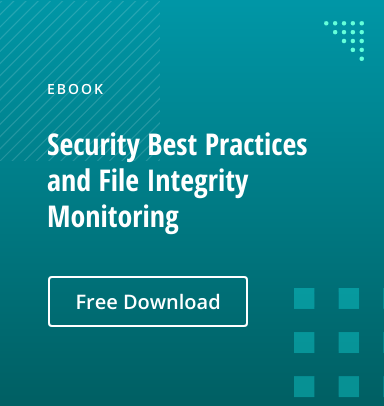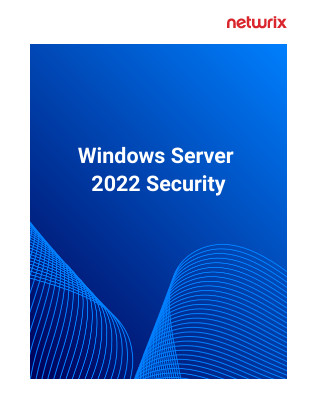As a business owner or manager, you must invest in top-notch security software to protect your critical files and other IT assets. Proactive vulnerability management and real-time threat monitoring help minimize the risk of costly data breaches and downtime. A well-crafted audit policy can help you comply with mandates like the Payment Card Industry Data Security Standard (PCI DSS) and Health Insurance Portability and Accountability Act (HIPAA).
A comprehensive security strategy can significantly benefit from both file integrity monitoring (FIM) and security information and event management (SIEM) solutions. In some cases, the integration of FIM and SIEM solutions can provide even stronger protection.
In this guide we explore FIM, SIEM and their differences; discuss whether you should use SIEM or FIM alone or integrate them; and explain how Netwrix can help you defend your IT systems and sensitive data.
What is FIM?
File integrity monitoring (FIM) is the process of tracking modifications to important files, including additions, deletions and movements, and providing details on who made specific changes and what attributes changed. To ensure file integrity, FIM often uses hash and checksum techniques, along with threat intelligence services.
FIM is an essential security control because it:
- Detects unauthorized changes — Unlike firewalls and anti-virus tools, which are often blind to polymorphous malware, zero-day threats and insider attacks, FIM provides breach detection by continually monitoring for potentially dangerous system file changes that could indicate persistent threats. The best FIM solutions integrate with the organization’s change management processes so they can alert on only unplanned and dangerous changes.
- Prevents data loss — FIM can alert you when important files are deleted, renamed or altered. By promptly correcting issues like drift from your secure configuration, you can minimize the risk of threat actors gaining access to your IT systems and data.
- Faciliates compliance — PCI DSS Requirement 11.5 requires companies to perform file integrity monitoring at least weekly for configuration files, critical system files and content files, and to alert appropriate personnel about unauthorized changes.
- Detects malware — FIM can detect malware that has modified critical files so you can quickly remove it and prevent further damage.
- Provides a historical record — FIM logs changes made to critical files to facilitate security investigations, troubleshooting, compliance and forensics.
What is SIEM?
Security information and event management software aims to spot active threats in an IT ecosystem. Much more than mere log management tools, SIEM solutions aggregate, correlate and analyze log data from a wide range of applications and devices; analyze that data to uncover potentially dangerous activity; and alert security teams. Data sources can include firewalls, antivirus (AV) software, intrusion detection systems (IDS) and intrusion prevention systems (IPS), and can involve the use of agents.
SIEM solutions combine three key elements:
- Security event correlation (SEC) — The process of aggregating, normalizing and prioritizing events from various sources to provide a complete picture of security activity
- Security event management (SEM) — The process of identifying, gathering, monitoring and reporting on security-related events in software or systems.
- Security information management (SIM) — The practice of collecting, monitoring and analyzing security-related data from computer logs and other data sources
SIEM vs. FIM
Now that you know what SIEM and FIM are, let’s highlight their main differences:
| FIM | SIEM | |
| How it works | FIM continuously monitors changes to files and systems for deviation from a known-good state. | SIEM gathers event log data from multiple sources and analyzes it using rules to identify potential security threats. |
| What it examines | FIM focuses on monitoring changes to files and system settings. | SIEM analyzes event data to spot activity indicative of security threats, such failed login attempts and escalation of privileges. |
| What it outputs | FIM indicates who made the change, when the change occurred and what attributes were changed. | SIEM provides details about the security threat and its location in the organization’s IT ecosystem. |
Using SIEM for FIM Purposes
SIEM platforms can provide a basic level of file integrity monitoring. For example, they can check for changes to system and configuration files indicative of a Trojan or other malware. However, this strategy often results in so many false alerts that security teams cannot focus on genuine security threats.
Standalone enterprise FIM, on the other hand, provides a complete view of the security configuration of systems, not just reporting on simple changes. It assesses file changes in context; for example, it considers whether a change to a Group Policy setting weakens security. Enterprise FIM also provides critical details about each change, such as whether it was planned or unplanned and whether it complies with the hardened build standard. It also gives a snapshot of the security configuration of vital systems, including databases, servers, workstations and firewalls.
Benefits of integrating FIM with SIEM
The combination of FIM and SIEM can provide a more comprehensive approach to monitoring and protecting your systems. The benefits of integrating FIM with SIEM include:
- Better threat detection and response — Integrating FIM and SIEM helps you detect and respond to threats in time to minimize damage.
- Deeper understanding of the context around changes — SIEM integration shows cybersecurity personnel the context of the changes detected by FIM, facilitating investigations.
- Zero-day malware detection — Combining FIM and SIM can empower you detect zero-day malware by spotting changes in AV, IDS and IPS logs and correlating them with other events.
- Reduced noise — Together, FIM and SIEM can more accurately hone in on true threats to reduce the number of false positives. This minimizes the risk of alert fatigue and eliminates the burden of manually going through hundreds or thousands of events during investigations.
- Meeting compliance requirements — While FIM is a key requirement for many compliance regulations, SIEM solutions typically provide predefined templates for compliance audits. As a result, combining SIEM and FIM solutions can facilitate full compliance coverage.
- Increased resilience — Together, FIM and SIEM help you to proactively reduce your vulnerability and to spot and respond to threat in their early stages, so you can better protect business continuity.
- Stronger business intelligence — Finally, combining FIM and SIEM will help you derive behavior analytics and other business intelligence. You can use this information to shape strategy and guide technology investments.
How Netwrix Can Help
Netwrix Change Tracker is an advanced FIM solution that:
- Gives you confidence that your systems are secure by taking the guesswork out of hardening your infrastructure.
- Provides effective threat detection by informing you of all improper changes to your IT systems without flooding you with false positives
- Facilitates quick investigations with detailed forensic information, including exactly what changed and who made the change
- Gives you the information you need to pass compliance audits
- Supports cloud infrastructures and Windows, macOS, Linux and Unix devices
Start your free trial today to see for yourself how Netwrix Change Tracker can help your organization achieve its cybersecurity and cyber resilience goals.

